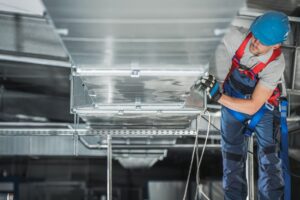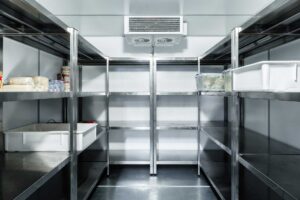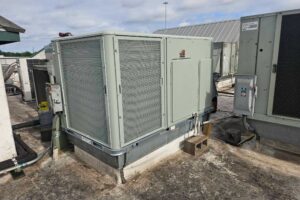Running a restaurant comes with many challenges, but few are as frustrating—or as uncomfortable—as excessive heat and humidity inside the building. If your restaurant feels muggy, sticky, or warm despite having air conditioning, you’re not alone—especially in Houston, where high humidity and heat are daily realities. The good news? You’re not stuck with it. Let’s break down why your restaurant is hot and humid and what you can do to fix it.
Common Causes of Heat and Humidity
1. Improper HVAC Sizing
If your HVAC system is too small for your space, it will struggle to keep up with demand, especially during lunch and dinner rushes. Kitchens generate a lot of heat, and if your system wasn’t designed with that load in mind, it might not be powerful enough to maintain comfortable indoor temperatures—something particularly important in the Houston climate.
2. Poor Ventilation
A key reason a restaurant is hot and humid is poor ventilation. Kitchens, dishwashing stations, and prep areas release heat and moisture into the air. Proper ventilation—like a well-designed make-up air system—can help reduce humidity. According to the U.S. Department of Energy, adequate ventilation is essential for indoor air quality and comfort in commercial buildings. In Houston, where ambient humidity is already high, this can become a major problem fast.
3. Worn or Dirty Equipment
Clogged filters, failing motors, or outdated components can reduce your HVAC system’s performance. When equipment is dirty or not functioning properly, it can’t cool and dehumidify the air effectively, making your restaurant feel hot and humid no matter the season.
4. Leaky Building Envelope
Gaps around doors, windows, and ductwork can let humid outside air creep in. This is especially problematic in southeast Texas, where summer humidity is relentless. Unsealed entryways and poorly insulated spaces make it hard for your HVAC system to do its job, contributing to high humidity indoors.
Why This Matters
A hot and humid restaurant doesn’t just affect comfort—it impacts safety, customer experience, and your bottom line. High humidity can lead to condensation on walls and floors, increasing the risk of slips and encouraging mold growth. More importantly, uncomfortable guests are less likely to stay, return, or leave positive reviews.
How to Fix the Problem
1. Schedule a System Evaluation
An experienced HVAC technician can assess whether your current system is sized correctly and operating efficiently. RAM Refrigeration Air Maintenance specializes in HVAC solutions tailored to commercial kitchens and dining areas throughout Houston.
2. Invest in Dehumidification
Sometimes, the best fix is a dedicated commercial dehumidifier. These systems pull excess moisture from the air, improving comfort and reducing the workload on your air conditioner.
3. Update or Repair Ventilation
Ensure your kitchen hood systems, exhaust fans, and make-up air units are all working in balance. This keeps air flowing efficiently and prevents hot kitchen air from spilling into customer areas.
The Bottom Line
If your restaurant feels hot and humid in Houston, it’s not just a nuisance—it’s a sign that something isn’t right with your HVAC or ventilation system. Ignoring it can lead to bigger problems down the road. Fortunately, you don’t have to guess your way through the fix.
Contact RAM today to schedule a professional evaluation. We’ll help you identify the root cause, recommend solutions, and keep your kitchen and dining room cool, comfortable, and compliant.







